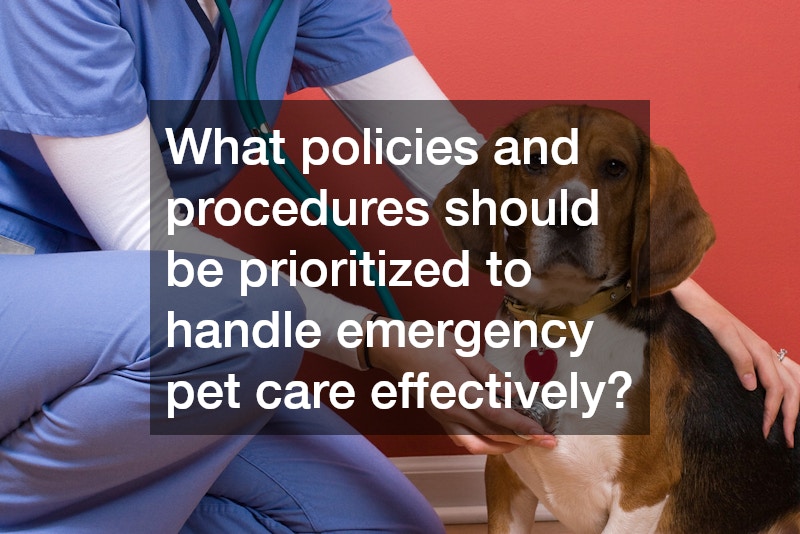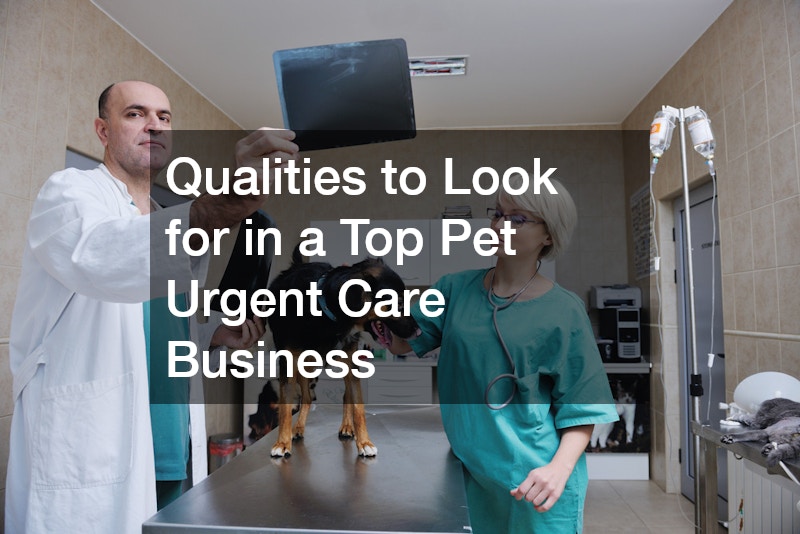When emergencies arise, pet owners need a reliable and compassionate urgent care provider they can trust. This article discusses key qualities that define top-notch pet urgent care services, aiding pet parents in making informed choices for their furry friends.
1. What qualifications and certifications should veterinarians at pet urgent care possess?
1.1 Veterinarian Certifications
Veterinarians at high-quality urgent care centers should possess pertinent certifications, including a Doctor of Veterinary Medicine (DVM) degree and a valid state license. Credentials such as board certification in emergency and critical care can further enhance confidence in their expertise.
A commitment to upholding the highest medical standards is often demonstrated through continuous membership in professional organizations. Veterinarians affiliated with the American Animal Hospital Association (AAHA) or similar groups show dedication to staying updated with current practices.
Beyond basic requirements, certifications in advanced pet care techniques can signify a center’s dedication to excellence. Specializations may include areas like anesthesia, surgery, or exotic animal medicine, enhancing the center’s capability to handle diverse emergencies.
1.2 Staff Training and Continuing Education
Veterinary staff in urgent care facilities should engage in ongoing training to maintain cutting-edge skills. Continuous education ensures the team remains informed about the latest advancements in veterinary medicine.
Through workshops, webinars, and seminars, the staff can develop expertise in innovative treatment methods. Many facilities encourage team members to pursue further certifications and specializations, which greatly contribute to overall care quality.
In-service training sessions focusing on communication, emergency response, and customer service augment staff development. These efforts work synergistically to ensure comprehensive, well-rounded service during critical situations.
2. How do pet urgent care businesses ensure low wait times for emergency cases?
2.1 Efficient Triage Systems
A robust triage system is vital in minimizing wait times and prioritizing the most critical cases. By assessing each pet’s condition upon arrival, medical staff can allocate resources appropriately and expedite care for severe emergencies.
The triage process should include a quick yet thorough initial assessment to gauge the severity of a pet’s condition. This ensures that life-threatening cases are dealt with promptly while stabilizing less critical ones.
Effective triaging reduces congestion in waiting areas and enhances the operational flow of the facility. Ultimately, this results in a more organized and responsive care environment for both pets and their owners.
2.2 Staffing and Resource Allocation
Strategic staffing is integral to maintaining low wait times and providing timely care in emergencies. Urgent care centers must anticipate fluctuations in demand and ensure a dynamic team presence during peak hours.
Proper allocation of resources, including medical equipment and support staff, maximizes efficiency. Equipped with the necessary tools and personnel, veterinarians can execute their duties swiftly, thus lowering the overall time pets spend waiting for treatment.
Partnerships with local veterinary practices can provide vital support during surges in emergency cases. Collaborations with nearby clinics and hospitals enable swift referrals and shared resources, benefitting all parties involved.
3. What advanced medical equipment and facilities should be available at top pet urgent care centers?
3.1 Diagnostic Tools and Technology
Top pet urgent care centers employ advanced diagnostic tools to conduct thorough assessments of pet health. State-of-the-art equipment such as digital X-rays, ultrasound machines, and in-house labs accelerates diagnosis and treatment.
Modern technology allows veterinarians to examine a pet’s internal structures with greater accuracy and less invasion. These tools empower the medical team to quickly identify issues, enabling faster intervention.
Facilities with up-to-date diagnostic capabilities foster confidence among pet owners and enhance the facility’s reputation. A commitment to technological advancement in veterinary care demonstrates a dedication to quality service.
3.2 Surgical and Critical Care Facilities
Having comprehensive surgical and critical care facilities is crucial for dealing with severe pet emergencies. Emergency surgeries, from orthopedic procedures to soft tissue repair, demand equipped surgical suites.
Access to intensive care units within the facility supports pets requiring close monitoring post-procedure. These units are vital for maintaining stable conditions and administering advanced treatments like ventilator support.
Facilities that provide a full spectrum of surgical and critical care services can address a broader range of emergencies. This capacity enhances the continuity of care from initial treatment through recovery.
4. How does a pet urgent care business maintain high customer satisfaction and build trust?
4.1 Clear Communication and Transparency
Effective communication forms the cornerstone of trust between pet owners and urgent care providers. Open, honest dialogue about treatment options, expected outcomes, and costs ensures transparency and builds credibility.
Regular updates during a pet’s treatment process are essential to keep owners informed and involved. Clear communication prevents misunderstandings and alleviates anxiety during emergencies.
4.2 Compassionate Care and Environment
Creating a compassionate environment contributes significantly to customer satisfaction and trust. A pet-friendly, welcoming atmosphere eases the stress pets experience during urgent care visits.
Staff who exhibit empathy and kindness foster a positive experience, reassuring both pets and their owners. Simple gestures, like providing treats or comfort items, demonstrate an understanding of the pet’s emotional needs.
5. What policies and procedures should be prioritized to handle emergency pet care effectively?
5.1 Standard Operating Procedures for Emergencies
Implementing standardized operating procedures for emergency care creates a foundation for consistent service quality. Clear, well-defined protocols ensure that every team member understands their role during crises.
Monitoring and reviewing these procedures regularly ensures they remain effective and reflective of best practices. Feedback loops and incident investigations help refine processes, enhancing overall emergency response.
5.2 Aftercare and Follow-up Services
Comprehensive aftercare and follow-up services are integral to a pet’s recovery process. These services include regular check-ups, post-treatment support, and guidance for ongoing wellness care.
Effective aftercare involves coordinated communication between the urgent care team and a pet’s primary veterinarian. This collaboration facilitates continuity of care, helping to track improvement and adjust treatment as needed.
.






